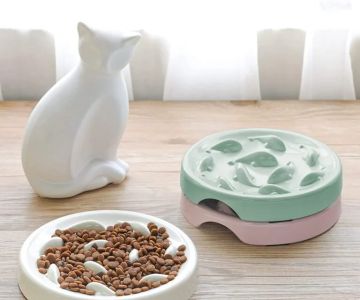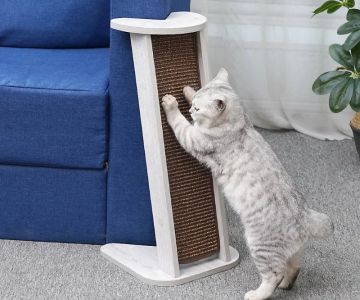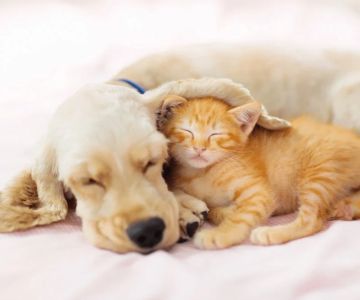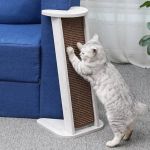
1-Understanding the Mystery of Bald Spots on Kittens’ Ears
As a kitten parent, it can be concerning to notice a bald spot on your kitten’s ear. While kittens are generally healthy, a variety of factors can lead to hair loss, especially around the ears. A bald spot can be caused by something as simple as grooming habits or something more serious like an infection. Understanding the potential causes and knowing how to address the issue is crucial for ensuring your kitten's well-being. In this article, we’ll explore common reasons why kittens may develop bald spots on their ears and how to care for your furry friend during this time.
2-Common Causes of Bald Spots on Kittens' Ears
There are several reasons why a kitten might develop a bald spot on their ear. It’s important to observe your kitten's behavior, grooming habits, and the location of the bald spot to help determine the cause. Below are some of the most common causes of hair loss on a kitten’s ear:

Lido Animal Hospital
Newport BeachOrange CountyCalifornia
2915 Newport Blvd, Newport Beach, CA 92663, USA
2.1-Grooming and Self-Trauma
One of the most common causes of bald spots in kittens is over-grooming. Kittens are naturally clean animals and may lick or scratch their ears excessively. If the kitten’s ear becomes irritated, they may begin scratching or biting at it, causing the fur to fall out. This can result in a bald spot in the affected area. Excessive grooming can be due to stress, boredom, or an underlying irritation, so it's important to monitor your kitten’s behavior closely.
2.2-Allergies
Allergic reactions are another potential cause of hair loss in kittens. Kittens can develop allergies to food, environmental factors like dust mites or pollen, or even flea bites. If your kitten is allergic to something, it can lead to itching and irritation on their skin, which could cause them to scratch or lick excessively, resulting in bald spots. If you suspect your kitten may have an allergy, it’s important to consult your vet to identify the trigger and find an appropriate treatment.
2.3-Fungal or Bacterial Infections
Infections can also lead to bald spots, especially if they affect the skin on the ear. Fungal infections like ringworm can cause hair loss in circular patches, and bacterial infections can cause similar symptoms, often accompanied by redness or pus. If your kitten’s bald spot is accompanied by signs of infection, such as discharge, swelling, or a foul odor, it's essential to visit your veterinarian for diagnosis and treatment.
2.4-Parasitic Infestations
Fleas, mites, and ticks are common parasites that can cause itching and hair loss in kittens. Flea bites or ear mites, in particular, can lead to intense itching and irritation around the ears, causing the kitten to scratch and potentially create bald spots. If your kitten has a bald spot on their ear along with signs of itching or scratching, checking for the presence of parasites is important. Your vet can provide treatment for parasitic infestations to help relieve your kitten’s discomfort.
2.5-Hormonal Imbalances
Though less common, hormonal imbalances can sometimes cause hair loss in kittens. Conditions like hypothyroidism or other glandular issues can affect the growth of fur and lead to bald patches. If your kitten’s bald spot persists or spreads, and you notice other symptoms like lethargy or changes in appetite, it’s important to consult your veterinarian for a thorough examination.
3-How to Care for Your Kitten with a Bald Spot
If your kitten has developed a bald spot on their ear, the next step is determining the cause and providing the appropriate care. Here are some general tips for taking care of your kitten while you figure out what’s causing the bald spot:
3.1-Monitor Grooming Habits
If the bald spot appears to be the result of over-grooming, try to identify any triggers for the excessive grooming behavior. Ensure your kitten is not stressed or bored, and provide them with plenty of toys and enrichment activities. If your kitten is still excessively licking or scratching, consult your vet to rule out any underlying causes, like allergies or infections.
3.2-Treating Allergies
If allergies are suspected, your veterinarian may recommend dietary changes or medications to reduce the allergic reaction. Flea allergies may require flea treatments for your kitten, while environmental allergies may be managed by reducing allergens in the home.
3.3-Visiting the Vet
Any time your kitten has a bald spot accompanied by symptoms like redness, swelling, or a foul odor, it’s important to seek veterinary care. A vet can properly diagnose infections or parasitic infestations and prescribe the right treatments, such as antifungal or antibacterial medications, to help your kitten heal.
3.4-Parasite Prevention
To prevent fleas, ticks, or ear mites, regular parasite control is essential. Speak with your veterinarian about flea preventatives or ear mite treatments. Keeping your kitten on a proper preventative schedule will help avoid future infestations and the discomfort they cause.
4-When to Seek Veterinary Care
While a small bald spot on a kitten’s ear can sometimes be a result of normal grooming or a minor irritation, there are times when you should seek professional care. If the bald spot is accompanied by any of the following symptoms, it’s time to take your kitten to the vet:
4.1-Spreading Bald Spots
If the bald spot on your kitten’s ear begins to spread to other areas of the body, it’s important to seek veterinary care. Spreading bald spots may indicate a more serious issue, such as a fungal infection or hormonal imbalance.
4.2-Signs of Infection
If the bald spot becomes red, swollen, or starts to ooze, it may be infected. A vet will be able to prescribe antibiotics or antifungal treatments to address the infection and prevent further complications.
5-Real-Life Example: Dealing with a Kitten’s Bald Spot
Take the story of Emma, a first-time kitten owner, who noticed her kitten, Max, developing a bald spot on his ear. At first, she thought it was just a result of his curious grooming habits. However, the bald spot grew larger, and Max started scratching more intensely. Concerned, Emma took Max to the vet, where they discovered that the bald spot was due to ear mites. After a simple treatment, Max's ear healed, and Emma learned the importance of monitoring her kitten’s health and seeking professional care when necessary. Emma’s experience highlights the value of early intervention in kitten health issues.
6-Where to Find Kitten Care Products
If your kitten is dealing with a bald spot, it’s important to use the right care products, whether it's flea treatments, gentle shampoos, or ear mite medications. Visit Omnia Pet for a wide selection of products designed to support your kitten’s health and well-being. Our high-quality, vet-approved products will help you care for your kitten effectively and safely.








 Chadwick's Maine Coons4.0 (6 reviews)
Chadwick's Maine Coons4.0 (6 reviews) Fluffy and Adorable Corp Boston5.0 (2 reviews)
Fluffy and Adorable Corp Boston5.0 (2 reviews) Jamesburg Veterinary Hospital4.0 (214 reviews)
Jamesburg Veterinary Hospital4.0 (214 reviews) Vetco Vaccination Clinic2.0 (5 reviews)
Vetco Vaccination Clinic2.0 (5 reviews) Dermatology for Animals Goodyear4.0 (68 reviews)
Dermatology for Animals Goodyear4.0 (68 reviews) Fur Baby Pet Resort4.0 (1 reviews)
Fur Baby Pet Resort4.0 (1 reviews) How to Stop a Kitten from Overeating Dry Food: Tips and Solutions
How to Stop a Kitten from Overeating Dry Food: Tips and Solutions How to Stop Your Cat from Eating Too Fast and Vomiting
How to Stop Your Cat from Eating Too Fast and Vomiting A Guide to Feline Cancer: Common Types and Symptoms Every Cat Owner Should Know
A Guide to Feline Cancer: Common Types and Symptoms Every Cat Owner Should Know The Top 10 Most Popular Kitten Names of 2024
The Top 10 Most Popular Kitten Names of 2024 Best Scratching Posts for Small Kittens | Omnia Pet
Best Scratching Posts for Small Kittens | Omnia Pet The Best Pet Camera to Talk to Your Kitten Remotely
The Best Pet Camera to Talk to Your Kitten Remotely